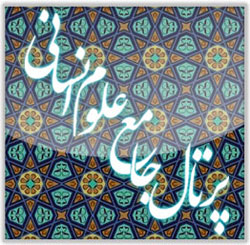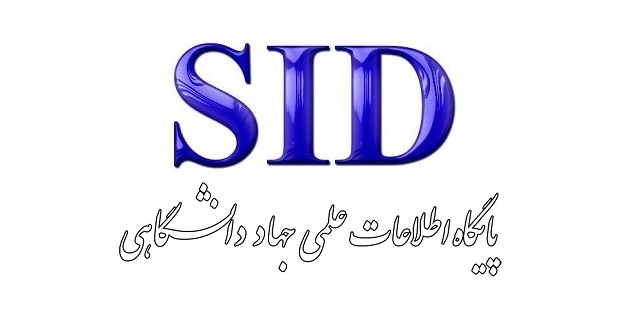Identifying the Factors Influencing the Interaction Between the Functions of Higher Education and Local Communities from the Perspective of Higher Education Spatial Planning in Kerman Province
Keywords:
higher education, local communities, spatial planning, higher education spatial planningAbstract
The aim of the present study was to identify the factors influencing the interaction between the functions of higher education and local communities from the perspective of higher education spatial planning in Kerman Province. The research method was applied and library-based. Data collection tools included document analysis and interviews. For data analysis, meta-synthesis and thematic analysis methods were used. The statistical population for the meta-synthesis section included valid national databases such as MAGIRAN, Irandoc, CIVILICA, SID, and Normags, as well as international databases such as ScienceDirect, Taylor & Francis, Springer, ProQuest, and DOAJ. The search covered the period from 2000 to 2024, resulting in the identification of 322 initial articles. The statistical population of the study consisted of experts and academic specialists with experience in the relationship between the university and society, industry, and the environment. Using the theoretical saturation method, a sample size of 25 participants was determined. The results revealed that the findings were presented in six categories. In this section, based on the initial model of the study, the axial codes were classified into eight main categories. According to expert opinion, communication and participatory codes were merged. Ultimately, the codes identified were: 7 research-related codes, 8 social codes, 7 participatory codes, 11 human codes, 4 environmental codes, 4 ethical codes, 5 outcome codes, and 6 codes for the functions of higher education in the community.
Downloads
References
Adriansen, H. K., Madsen, L. M., Saarinen, T., & Waters, J. (2025). Exploring the peculiar relationship between higher education quality and internationalization: a discourse analytical and spatial reading of four European university strategies. Nordic Journal of Studies in Educational Policy, 1-15. https://doi.org/10.1080/20020317.2025.2462061
Albert-Lőrincz, E., Paulik, E., Szabo, B., Foley, K., & Gasparik, A. I. (2019). Adolescent smoking and the social capital of local communities in three counties in Romania. Gaceta sanitaria, 33(6), 547-553.
Alizadeh Fallah, S., Majdi, F., Ayatollahi Lora, M., & Rajabi, F. (2023). A Detailed Study on Improving the Quality of Technical Education Based on Industry-University Interaction. 8th National Conference on Modern Approaches in Education and Research, Mahmoudabad. Online Resource
Amadi, R., & Bayo, P. (2020). Comparative Study of the Corporate Social Responsibility of Rivers State University and University of Port Harcourt, Nigeria. NIU Journal of Social Sciences, 6(1), 113-121.
Baradaran Hagheer, M., & Nourshahi, N. R. A. (2019). Conceptualizing University Social Responsibility in Iran. Quarterly Journal of Research and Planning in Higher Education.
Cantor, N. (2020). Transforming the Academy: The Urgency of Recommitting Higher Education to the Public Good. Liberal Education, 106(1), 48-55.
Capaldo, G., Costantino, N., Pellegrino, R., & Rippa, P. (2016). Factors affecting the diffusion and success of collaborative interactions between university and industry: The case of research services. Journal of Science and Technology Policy Management, 7(3), 273-288. https://doi.org/10.1108/JSTPM-12-2015-0038
Caputo, F., Ligorio, L., & Pizzi, S. (2021). The contribution of higher education institutions to the SDGs-an evaluation of sustainability reporting practices. Adm. Sci., 11(3), 97. https://doi.org/10.3390/admsci11030097
fatehrad, k. (2015). A framework to improve university-industry collaboration. Journal of Industry-University Collaboration.
Ferreras-Garcia, R., Sales-Zaguirre, J., & Serradell-Lopez, E. (2021). Competency assessment and learning results in tourism internships: is gender a relevant factor? Higher Educ. Skills Work-Based Learn.VL - 12(1), 162-177. https://doi.org/10.1108/HESWBL-05-2021-0096
Haalan, d., & ramli, D. (2020). University Social Responsibility and Community Relations. Asian Journal of Education and Social Studies, 9(4), 47-58. https://doi.org/10.9734/ajess/2020/v9i430255
Kang, J., Lee, J., Jang, D., & Park, S. (2019). A Methodology of Partner Selection for Sustainable Industry-University Cooperation Based on LDA Topic Model. Sustainability, 11(12), 3478. https://doi.org/10.3390/su11123478
Kirchberger, M. A., & Pohl, L. (2016). Technology commercialization: a literature review of success factors and antecedents across different contexts. The Journal of Technology Transfer, 41(5), 1077-1112. https://doi.org/10.1007/s10961-016-9486-3
Kowsari, S. A. H. (2023). Identification and Analysis of Delegable Functions in the Higher Education System Based on Spatial Policies. Scientific-Research Quarterly of Cultural StrategyER -.
Mahmoudi, M. T., & Gol Mohammadi, F. (2022). Ranking Barriers to University-Industry Relations from the Perspective of Faculty Members at Islamic Azad University, Shahrekord Branch. Management and Accounting Studies Quarterly, 8IS - 4, 34-55.
Mahmoudian, O., Heydari, A., Hashemi, M., & Mehrkam, M. (2022). Developing a Strategic Model for Analyzing Factors Influencing Industry-University Relations (Case Study: Islamic Azad University Branches in Tehran). Culture in Islamic Universities, 12(42), 187-204.
Mobad, M., & Nadi Zadeh Ardakani, A. (2022). Review of Effective University-Society Interaction Indicators Based on University Social Responsibility Models. Science and Technology Policy Journal, 12(1), 99-112. https://doi.org/10.37467/revtechno.v11.4482
Moradnezhadi, H. (2023). Exploring Strategies to Improve University-Industry and Society Relations at Ilam University. Quarterly Journal of Innovation Ecosystem, 3(2), 46-88.
Mousavi, T., Khosravi, M., & Nemati, M. A. (2019). University Studies: A New Approach to Developing University-Industry Relations. Biannual Journal of Industry and University, 7(25).
Muhammad Ali, I., Mustapha, S., & Osman, U. H. (2020). University social responsibility: A review of conceptual evolution and its thematic analysis. Journal of Cleaner Production, 286, 124931. https://doi.org/10.1016/j.jclepro.2020.124931
Pakzad Bonab, M., Ehtesham Nejad, E., Mohseni Kiasari, M., & Nikroui, Z. (2024). Comprehensive Framework for Analyzing Industry-University Collaboration. Journal of Technology in Entrepreneurship and Strategic Management, 3(1), 34-55. https://doi.org/10.61838/kman.jtesm.3.1.1
Pouranjanar, G., Salarzehi, H., Tabavar, A. A., & Yaghubi, N. (2021). University Experts' Perspectives on University-Society Interaction. Iranian Higher Education, 13(4), 1-24ER -.
Pouya, A., & Bagheri, R. (2023). Proposing a Budget Policy Model for University-Society Interaction Programs Using System Dynamics Approach (Case Study: Ferdowsi University of Mashhad). Industrial Management Perspective, 13(1), 9-40.
Radinger-Peer, V., & Pflitsch, G. (2017). The Role of Higher Education Institutions in Regional Transition Paths Towards Sustainability. Review of Regional Research, 37(2), 161-187.
Salimi, L., & Kabiri Nasab, H. (2022). Exploring Social Responsibility Components in Higher Education in Iran. New Ideas in Education, 5(11), 45-55.
Seyyed Naqavi, M. A., Pour Behrouzan, A., & Seraji, R. (2019). Identifying Causes of Weak University-Industry Relations and Proposing Improvement Strategies. Majles and Strategy Journal, 26(99).
Shahsavari, A., & Alamolhoda, J. (2025). When the university desires, but society refuses: a case study of universities' missions in the context of contribution to development. Studies in Higher Education, 1-18. https://doi.org/10.1080/03075079.2025.2461270
Sogovara, P., & Fitjar, R. D. (2023). Contextualizing the role of universities to regional development: Introduction to the special issue. Regional Studies, Regional Science, 6(1), 331-338. https://doi.org/10.1080/21681376.2019.1601593
Vasilescu, R., Barna, C., Epure, M., & Baicu, C. (2010). Developing university social responsibility: A model for the challenges of the new civil society. Procedia Social and Behavioral Sciences, 2, 4177-4182. https://doi.org/10.1016/j.sbspro.2010.03.660
Wood, E. W. (2024). University social responsibility: a student base analysis in Brazil. International Review on Public and Nonprofit Marketing, 13, 151-169. https://doi.org/10.1007/s12208-016-0158-7
Zamandi, A. A., Hassani, M., & Qalavandi, H. (2022). Interpretive-Structural Modeling of University Social Responsibility Components to Enhance Social Capital (Case Study: Shahid Beheshti University). Scientific Journal of Social Capital Management, 9(4), 461-491.
Zulfiqar, S., Sadaf, R., Popp, J., Vveinhardt, J., & Máté, D. (2019). An Examination of Corporate Social Responsibility and Employee Behavior: The Case of Pakistan. Sustainability, 11(13), 3515. https://doi.org/10.3390/su11133515
Downloads
Published
Submitted
Revised
Accepted
Issue
Section
License
Copyright (c) 2025 کامران قربان نژاد اسطلکی , زهرا وظیفه, امین رضا کمالیان, عبدالعلی کشته گر, محمد قاسمی (نویسنده)

This work is licensed under a Creative Commons Attribution-NonCommercial 4.0 International License.








